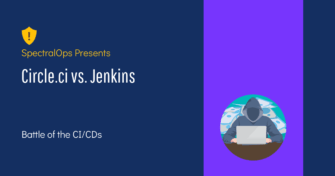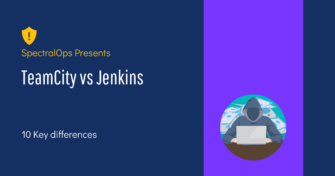Circle.ci vs Jenkins: Battle of the CI/CDs
Continuous integration and delivery are necessary in any production level software development process. CI/CD are more than just buzzwords. Rather, it is a fully-fledged methodology of
We’ve all been there—staring at code, hoping no hidden traps are waiting to cause chaos down the line. That’s where secure code reviews come in. Think of them as your last chance to catch those pesky bugs and vulnerabilities before they wreak havoc.
And here’s a little reality check—those cutting-edge LLMs? They suggest insecure code 30% of the time. So, even with AI on our side, we still need to stay sharp.
This guide will walk you through a secure code review, helping you spot those vulnerabilities and lock down your code before it’s too late.
Before diving into the process, it’s essential to understand what a secure code review is and why it’s a crucial step in your development lifecycle.
At its core, a secure code review systematically examines your codebase to identify potential security flaws, vulnerabilities, and areas where best practices might have been overlooked. The goal isn’t just to find bugs and ensure that the code adheres to security standards, minimizes risks, and is resilient against potential threats.
Why does this matter? Every line of code you write is a potential entry point for malicious actors. Common vulnerabilities like SQL injection, cross-site scripting (XSS), and buffer overflows can often be traced back to minor oversights during coding. Integrating secure code reviews into your workflow significantly reduces the risk of these vulnerabilities making it into your final product.
But a secure code review is more than just a safety net; it’s also an opportunity to improve your code quality overall. It encourages better coding practices, promotes learning within your team, and ultimately leads to more robust, maintainable software. So, if you’re serious about security—and you should be—secure code reviews aren’t optional; they’re essential.
Preparation is critical to ensuring a secure code review that fortifies your software. Each step has its importance, contributing to a thorough and effective review.
To start, having the right tools at your disposal is crucial. Automated scanning tools can quickly surface common vulnerabilities, and code smells, catching issues that might otherwise slip through unnoticed. For example, using Git Secrets can prevent sensitive information from being inadvertently committed into your repositories.
While these tools won’t catch every problem, they free you up to dive deeper into the more intricate parts of the code—those areas where the human eye is still unmatched.
The environment where you conduct your code review needs to be locked down. Why? Because during the review, you’re dealing with code that could be sensitive or critical to your application’s security.
By restricting access to only those who need it and isolating the review environment, you reduce the risk of leaks or unauthorized changes. Consider DevSecOps principles further to enhance your approach to security throughout the development lifecycle.
Consistency and thoroughness come from having a solid plan. Guidelines and checklists aren’t just bureaucratic hurdles—they ensure that every line of code is scrutinized for potential weaknesses.
From input validation to encryption standards, these checklists guide you through the review process, helping you systematically identify and address vulnerabilities.
The result? A codebase that’s not only secure but also aligns with best practices.
Effective communication is the glue that holds the review process together. Before you start, bring the team together to discuss the review’s objectives, the tools you’ll be using, and any specific areas that need extra attention.
This alignment ensures that everyone is pulling in the same direction, making the review more efficient and increasing the chances of catching those elusive issues that could otherwise slip unnoticed.
With the groundwork in place, it’s time to dive into the secure code review itself.
Following a structured, step-by-step approach ensures that every part of the code is thoroughly examined for potential security flaws. Let’s break down the process into actionable stages.
The initial assessment sets the stage for the entire review process. This phase is about a solid understanding of the codebase and its architecture.
Automated tools come into play during static code analysis, providing a preliminary scan of the codebase for known vulnerabilities and coding errors.
Manual review is where a deeper, more nuanced examination of the code occurs. This stage allows you to identify issues that automated tools might miss.
Third-party components offer valuable functionality but can also introduce significant risks.
Testing and validation are critical to ensuring the code is secure after addressing vulnerabilities.
Each step is crucial for a thorough and effective secure code review. By following this structured process, you can ensure that your codebase is resilient against security threats, ultimately delivering more secure software.
Completing the secure code review is only part of the journey. The real value comes from what happens next—how the findings are documented, communicated, and acted upon.
Post-review activities ensure that the insights gained during the review are effectively implemented, leading to more secure and resilient software.
| Post-Review Activity | Tasks | Details |
| Documenting Findings | – Create a comprehensive report- Include evidence- Prioritize issues | – Summarize critical findings, including descriptions of vulnerabilities, potential impact, and remediation steps.- Provide code snippets, screenshots, or logs to illustrate issues.- Rank vulnerabilities by severity and impact. |
| Communicating Results | – Share findings with the development team- Engage with project managers- Discuss findings with security teams- Incorporate insights from cyber risk management to strengthen your post-review strategies. | – Explain findings and discuss necessary remediation steps.- Ensure project managers understand the impacts on timelines or resources.- Involve security teams to ensure adherence to security policies. |
| Planning for Remediation | – Create a remediation plan- Allocate resources- Monitor progress | – Outline steps, responsibilities, deadlines, and testing procedures for fixing vulnerabilities.- Ensure the development team has the necessary resources.- Regularly check in on remediation efforts. |
| Scheduling Follow-Up Reviews | – Set a review schedule- Promote continuous improvement- Educate the team | – Schedule follow-up reviews based on the severity of findings.- Update guidelines and checklists with new insights.- Conduct training sessions to share lessons learned and prevent future issues. |
Establish a regular review schedule to maintain code security, adjusting frequency based on project risk. Continuously update review checklists to reflect new vulnerabilities, best practices, and lessons learned.
Cultivate a security-first culture by training your team and encouraging collaboration between developers and security professionals.
Conducting a secure code review is not just about ticking boxes—it’s about fortifying your software against the ever-evolving landscape of security threats. From preparing your tools and environment to conducting thorough assessments and implementing post-review activities, every step is crucial in ensuring your code is resilient and robust.
But staying ahead of vulnerabilities requires more than just a one-time effort. It demands continuous vigilance, regular updates, and a culture of security within your team. Don’t let security become an afterthought. Integrate advanced tools and best practices into your workflow today and empower your team to build secure software from the ground up. Your code’s security is the foundation of your product’s success—make sure it’s rock solid.

Continuous integration and delivery are necessary in any production level software development process. CI/CD are more than just buzzwords. Rather, it is a fully-fledged methodology of

Jenkins is the most used open-source CI/CD solution out there. Being a FOSS project usually means that there’s an ever-growing number of extensions and capabilities for

Code fast and break things may be a healthy approach when you’re rushing to present investors with a POC. However, when it comes to developing real-world